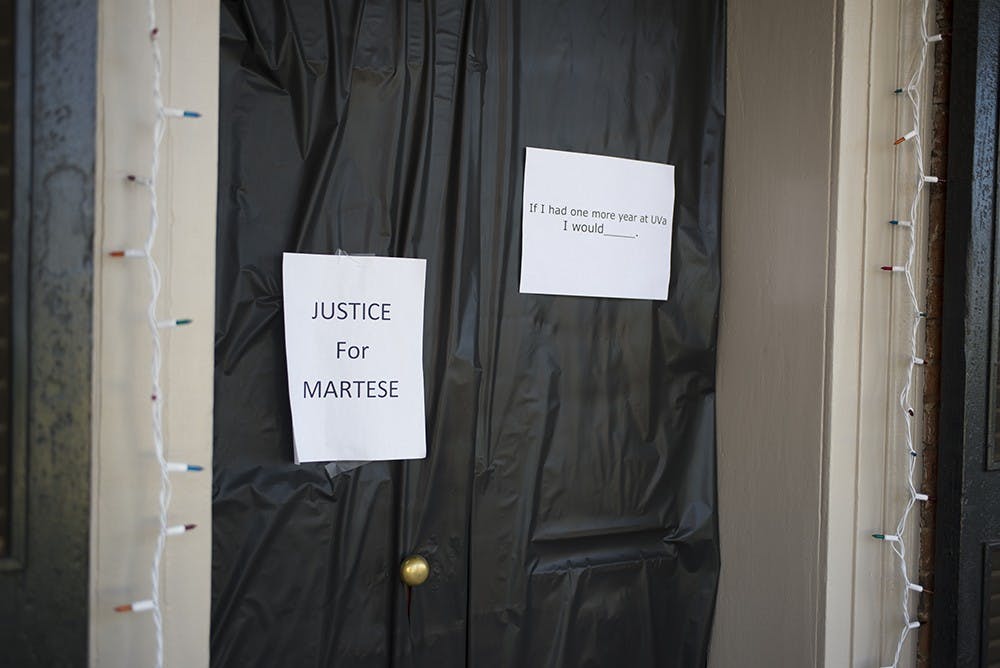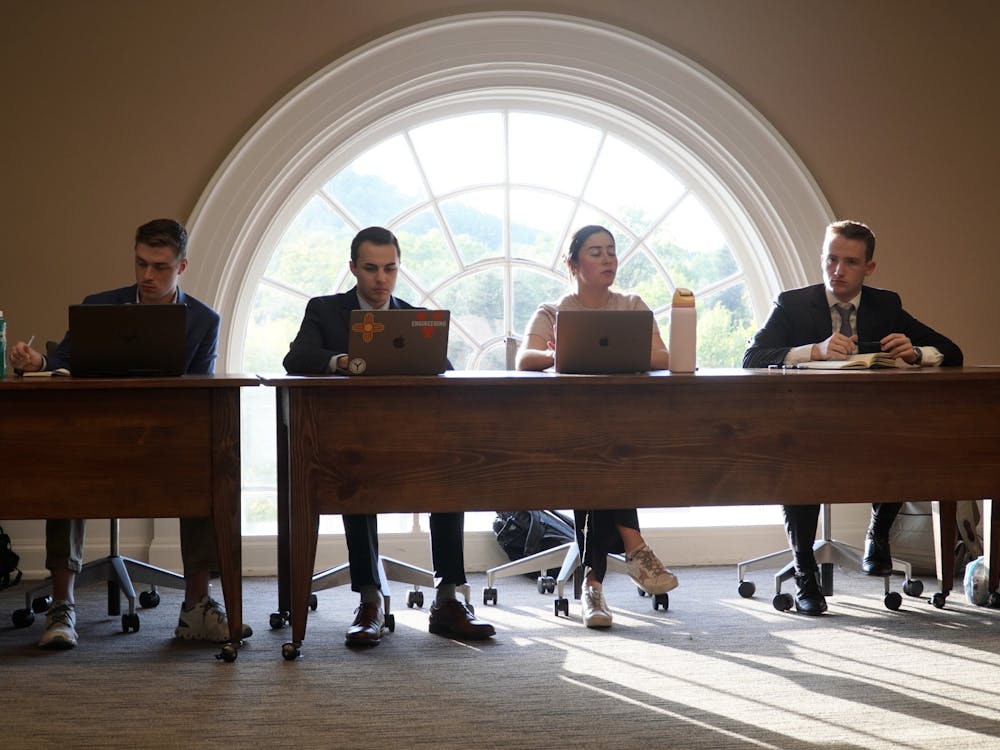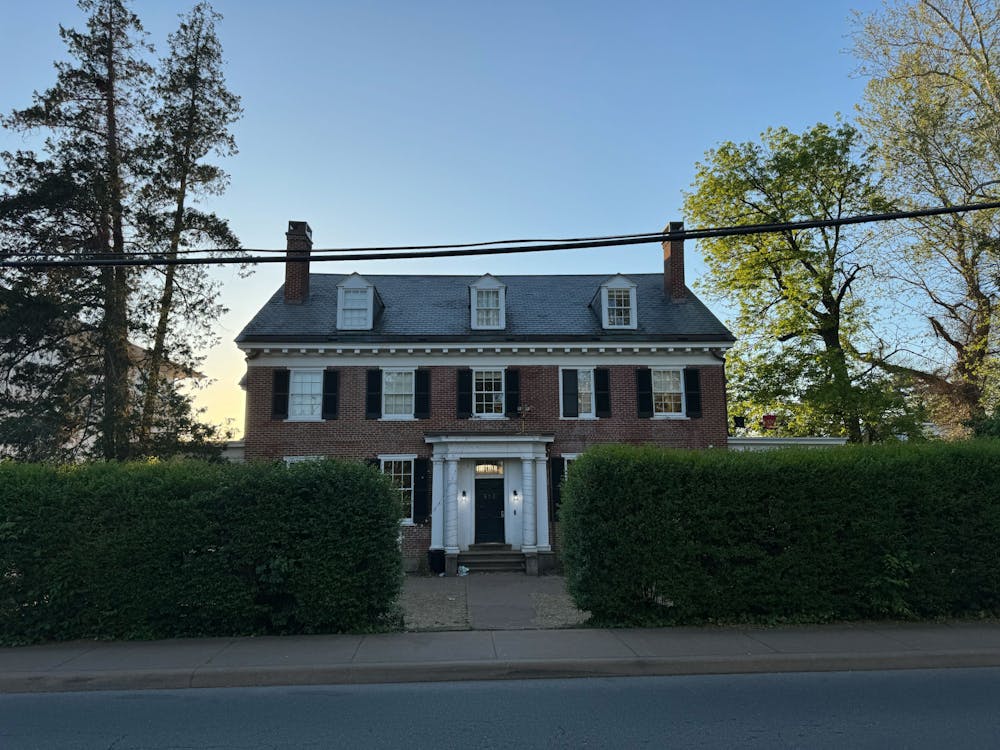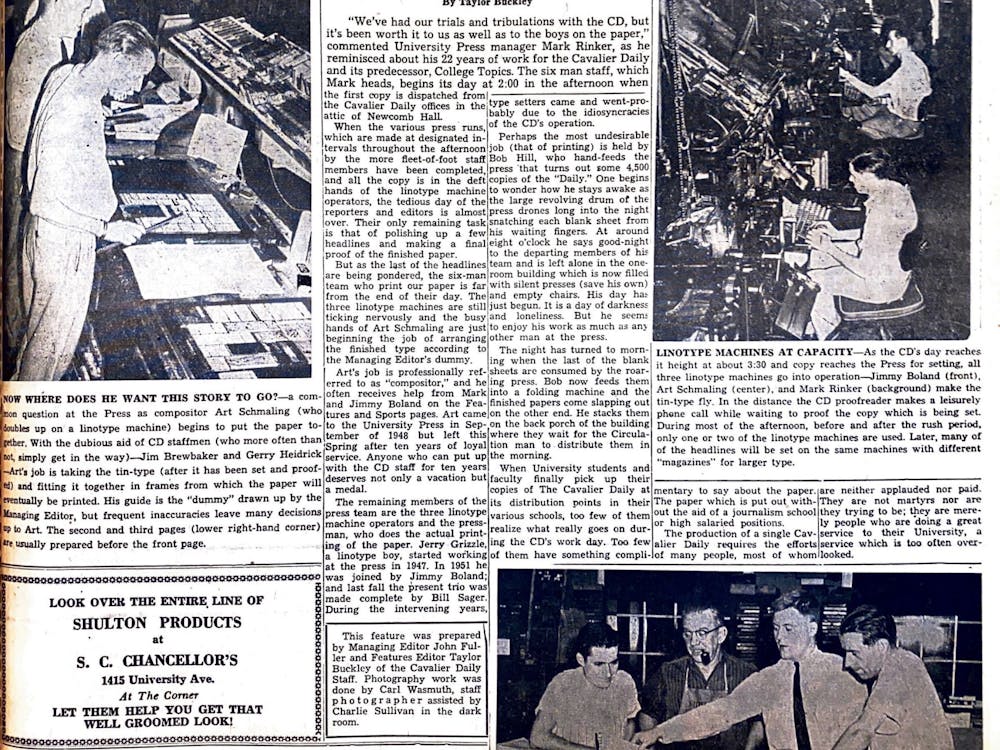Fourth-year College students Sidney Gafford and Tina Mensa-Kwao organized a symbol of solidarity for third-year College student Martese Johnson Thursday by having Lawn residents place black tablecloths on every Lawn room door.
Gafford and Mensa-Kwao — both Lawn residents and members of the Black Student Alliance — worked with Black Dot’s efforts to raise support for Johnson Thursday, Mensa-Kwao said. Black Dot asked students to wear black clothing.
“On Thursday, as advertised by Black Dot, students were wearing black in support of Martese and his initial appearance in [court],” Mensa-Kwao said. “The black on the doors were to show solidarity while students wore all black that day.”
Fourth-year College student Sky Miller, senior resident of the Lawn, said signs reading, “If I had one more year at UVA, I would…” accompanied the tablecloths in order to emphasize there is much work left to be done at the University to improve race relations. He said he was fully in support of the group’s actions and joined them in the symbol of community support.
“Along with many other Lawn residents, I put up a black tablecloth to stand in solidarity with the communities that have been affected by this event,” Miller said. “While some are philosophically unwilling to make judgments on whether or not the case had racial motivations, we felt we should support a community of students that identify by their race and know Martese. For this reason, I — and we — wanted to act.”
Gafford said that although she and Mensa-Kwao were in charge of organizing the effort, they had support from others. Around 30 to 35 people, all incoming and outgoing Lawn residents, met Tuesday to discuss ways in which the Lawn community could respond to the current incidents — specifically Johnson’s arrest by ABC officers.
After the group came up with the idea of putting black tablecloths on Lawn room doors, about 10 Lawn residents put the tablecloths on all of the Lawn room doors Wednesday night.
Mensa-Kwao said she and Gafford were hoping to motivate people to better understand the problems affecting the black community.
“We wanted to encourage people to educate themselves on the issues at hand so they would be able to support their black friends,” Mensa-Kwao said.
The responses they have received have been mostly positive — a sign Gafford and Mensa-Kwao took as confirmation that the majority of Lawn residents are in support of their statement.
A few Lawn residents declined to participate and did not have tablecloths on their doors. Miller said some Lawn residents worried that the statement went too far in advocating for Johnson. However, Miller said he felt the tablecloths were symbolic of the fact that the Lawn community supported a peer during a difficult time.
“There was some worry that our statement would be too strongly saying we think Martese was right in all ways,” Miller said. “However, the point was instead to show support for him, as our peer, in this tough time, and to hope for the just result.”
Gafford said the need to speak up was not solely because Johnson’s arrest. She said many black students feel the stated injustice of his arrest represents a tip of the iceberg in terms of how blacks have been treated at and around the University for a very long time.
“A bigger idea to keep in mind is although the Martese incident was a spark to this huge movement and conversation, everything that’s being done is not only about what happened to Martese,” she said. “But more about what’s been going on with black students at the university for years and how continuously certain issues are not addressed. This is another point in time where black students are speaking up.”
The effort was especially necessary, Gafford said, in the wake of questions raised by the black community surrounding the inclusivity of the Lawn community.
“The most important thing for us is that we as a Lawn community respond [to the Martese incident] in a way to show inclusivity,” Gafford said. “Especially being that there are no black students living on the Lawn next year, there is this lingering idea that the Lawn is not a space for all students to feel comfortable, occupy or just hang out. I have a number of friends who don’t even walk by the Lawn on a daily basis because they’ve never felt included in it.”
Gafford said she and other Lawn residents wanted to come together to show the community that they are not selective in whom they support.
“We wanted to show that we are really trying to be supportive of all of our peers,” Gafford said.
Miller said the Lawn community can do a lot more in the future to be more welcoming and inclusive — an idea that he believes is shared by most residents and students. He said he has not seen any explicitly racist actions on the Lawn during his time as a resident, but understands Gafford and Mensa-Kwao’s beliefs that black students do not feel connected to the Lawn the same way students of other ethnicities do.
“Going forward, Lawn residents can reach out to a wide array of communities and students, host small and large events, and welcome students,” he said. “Making the Lawn a community for all students is an objective we'll have every year and it is my hope we'll make progress.”





